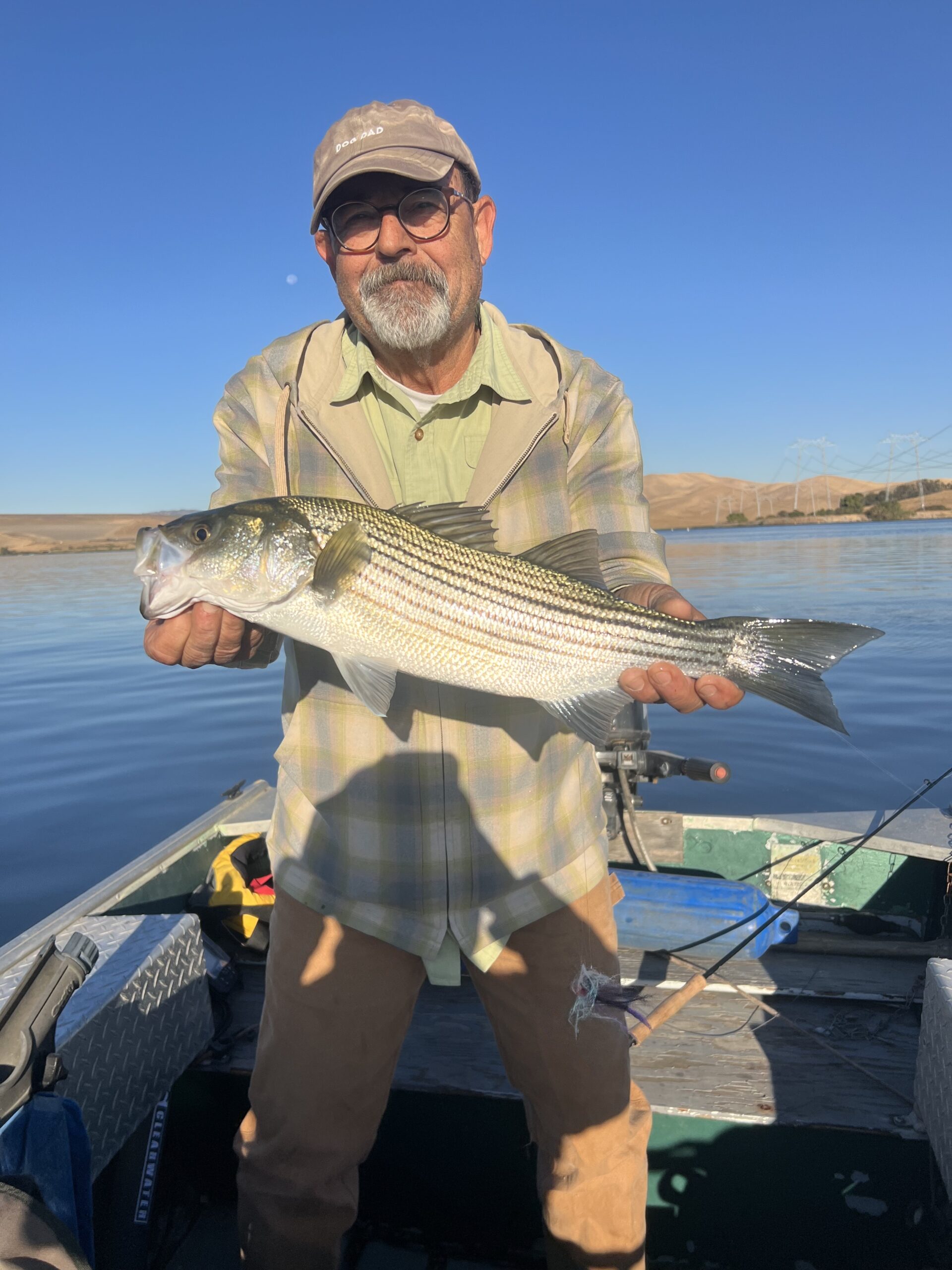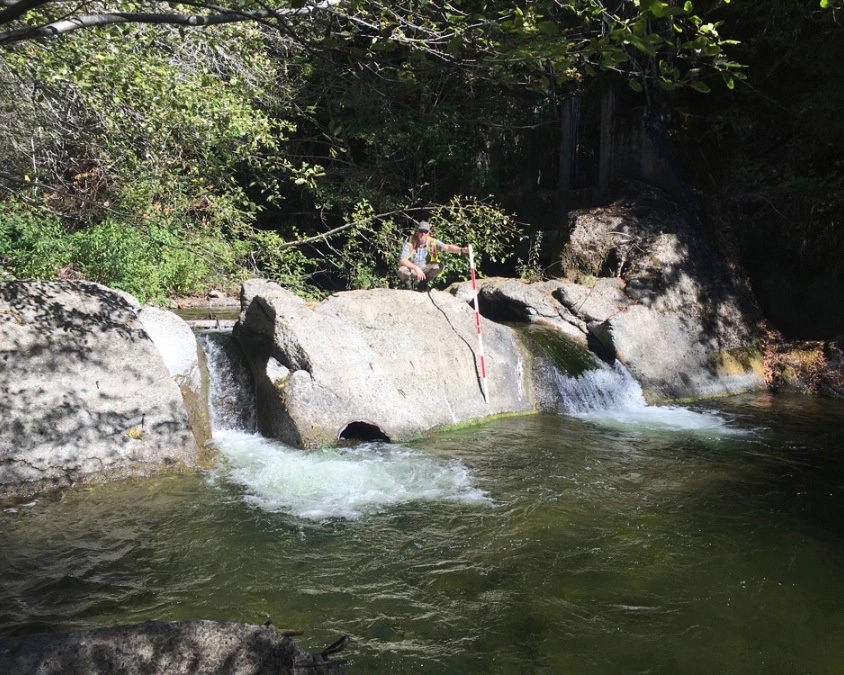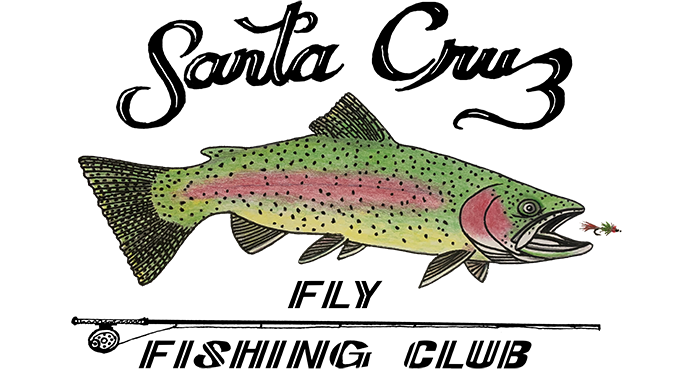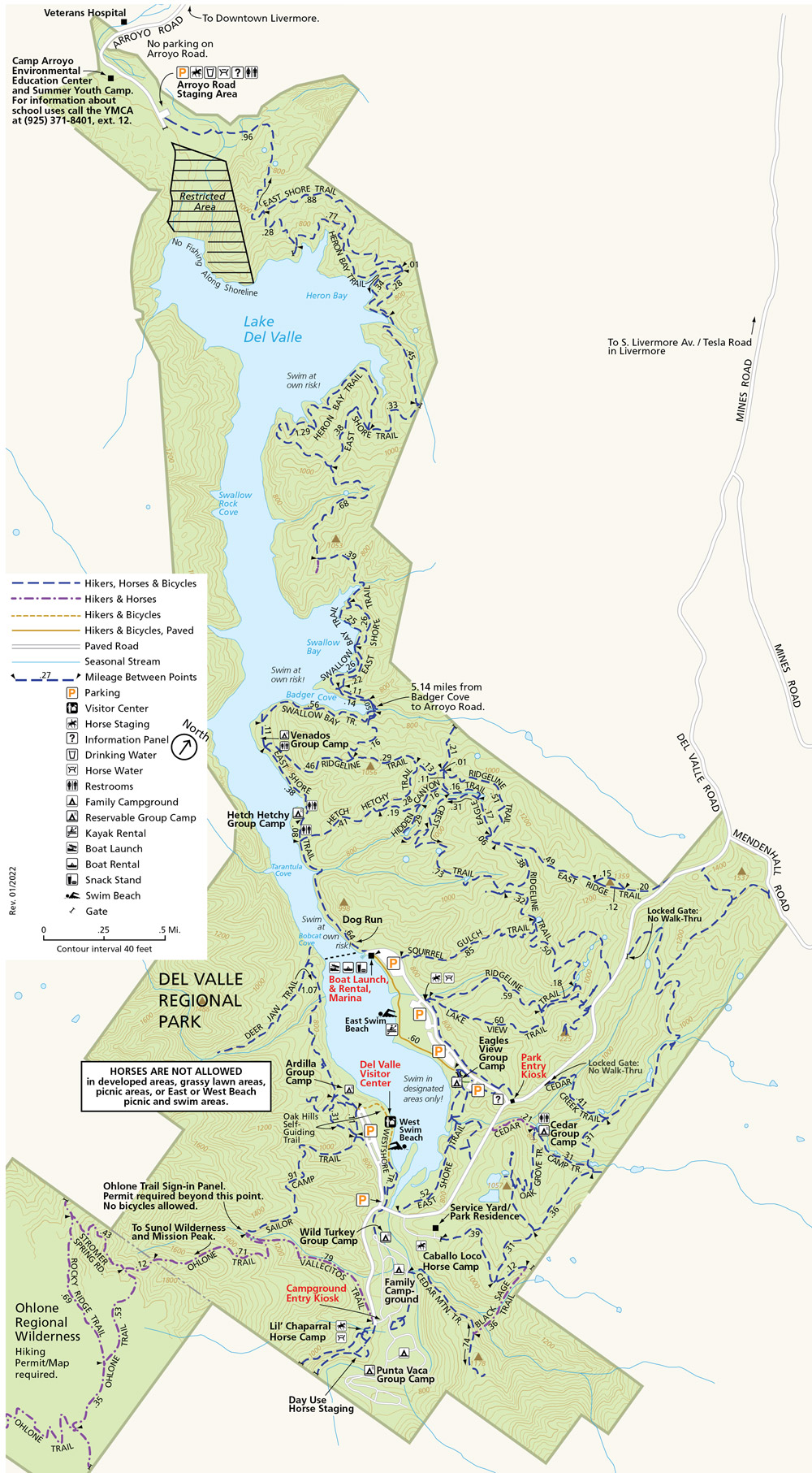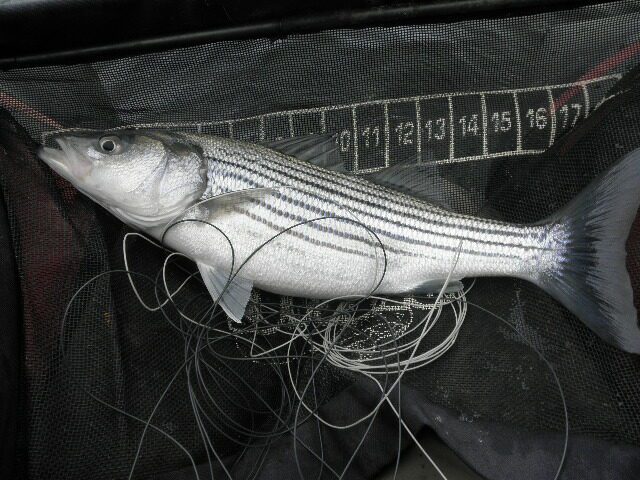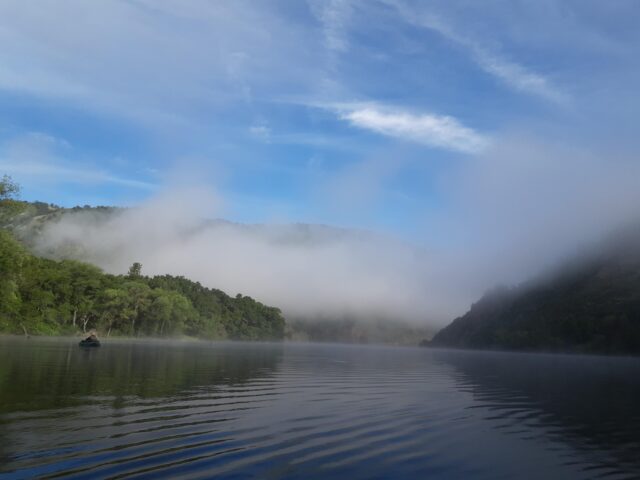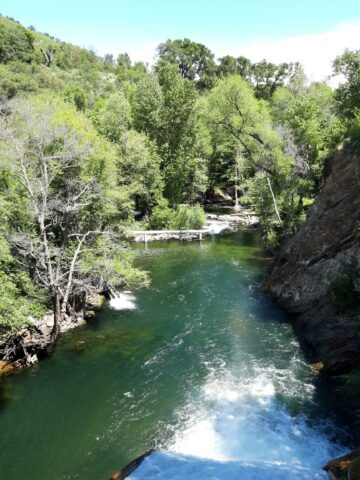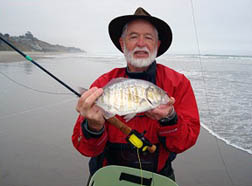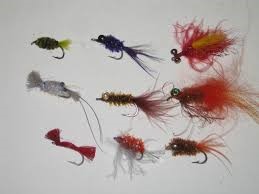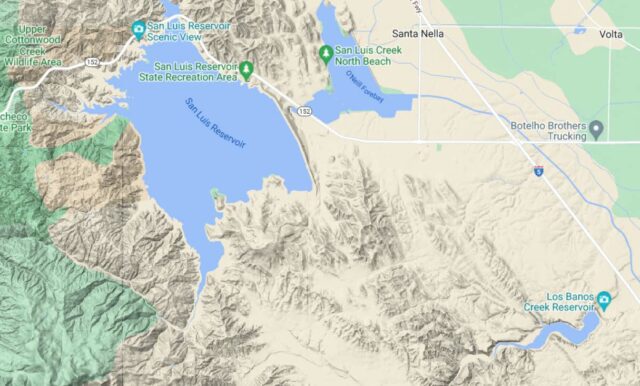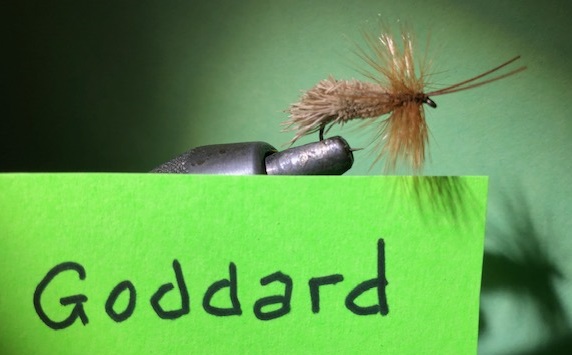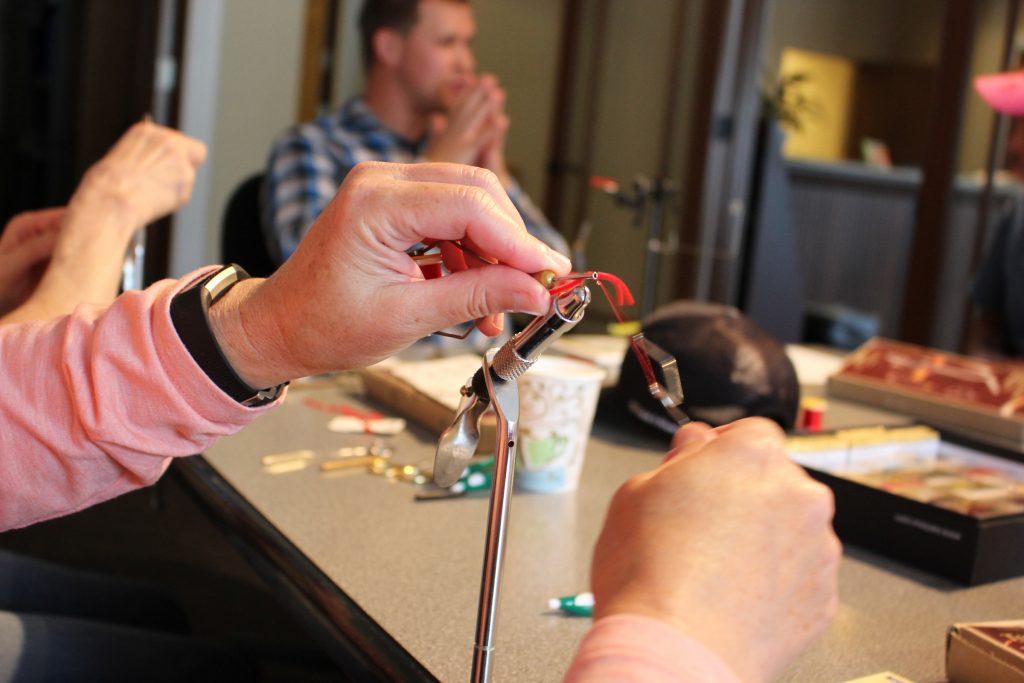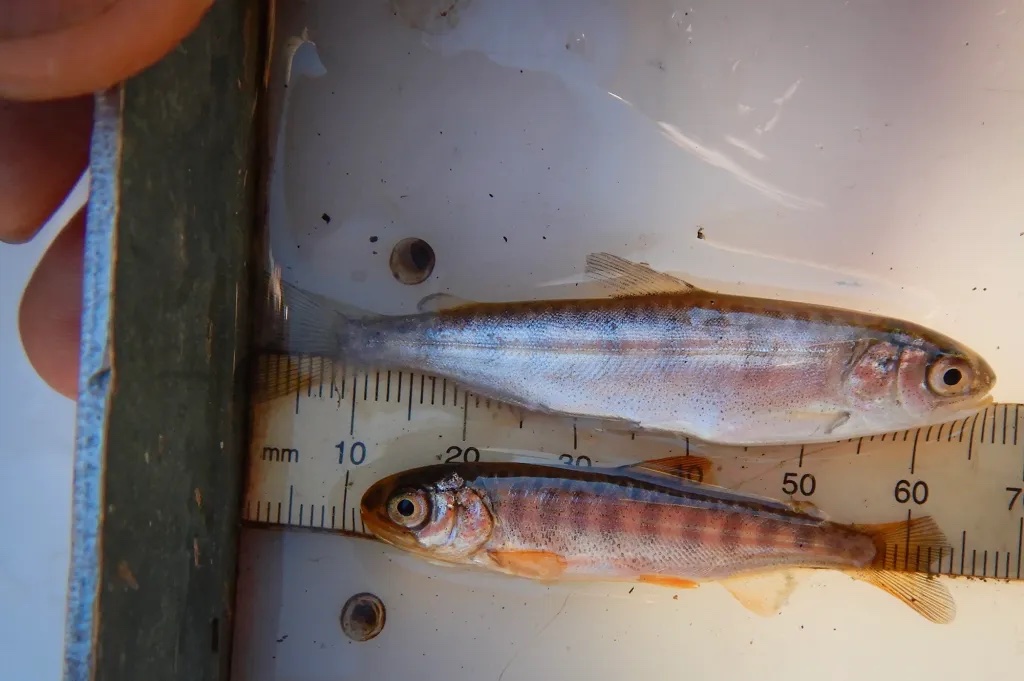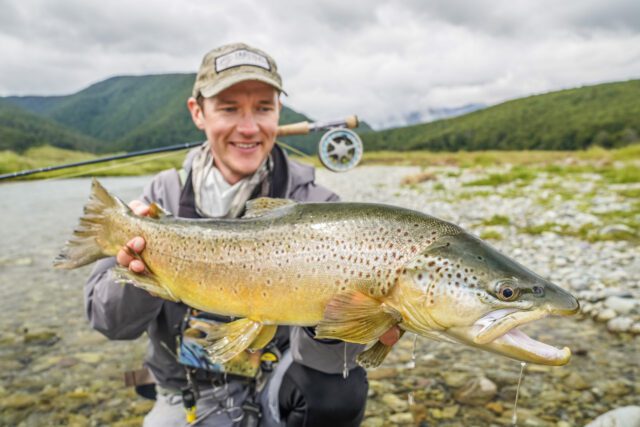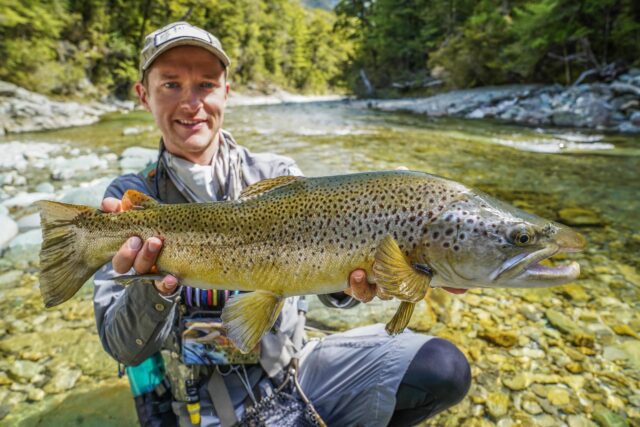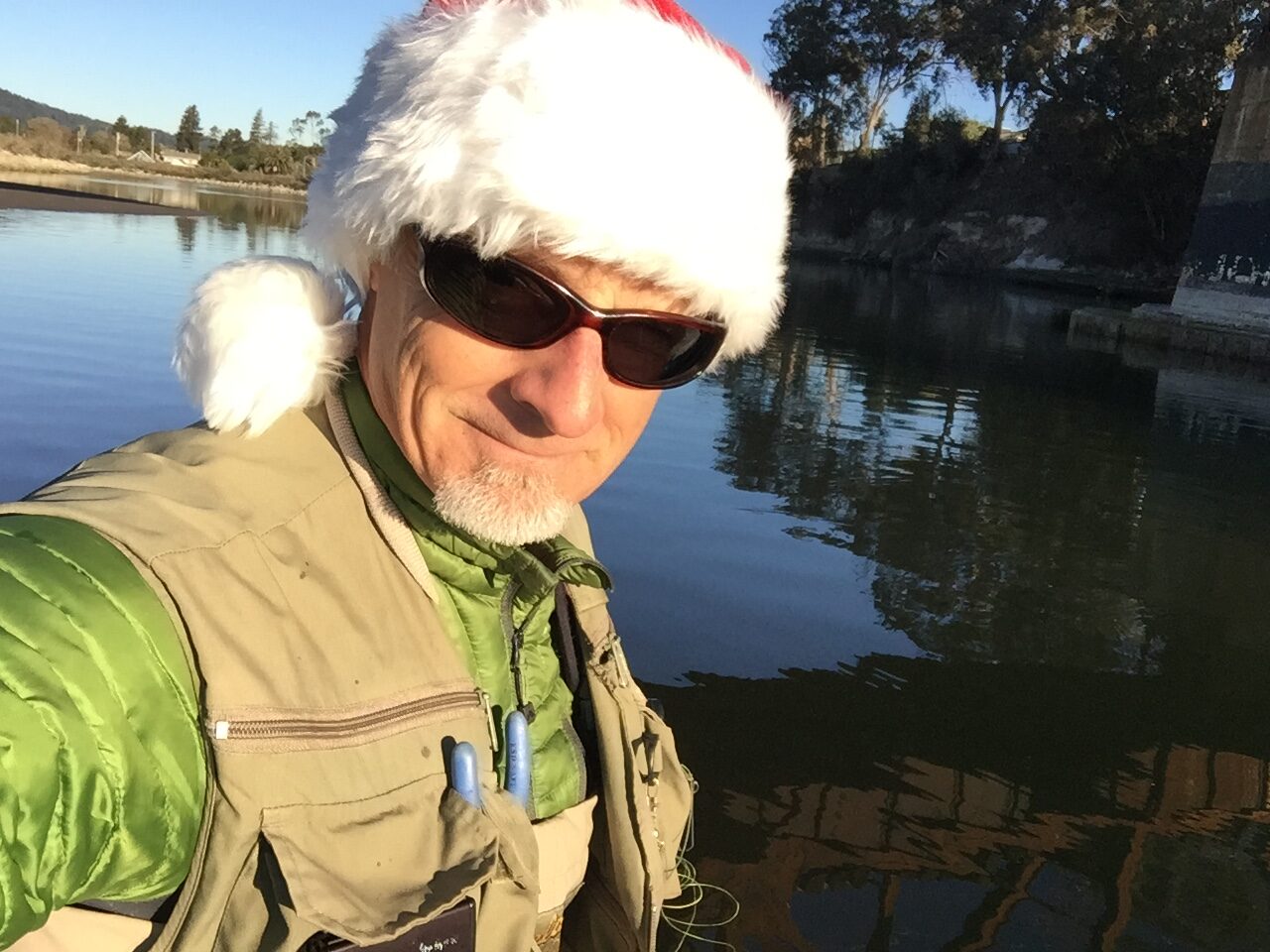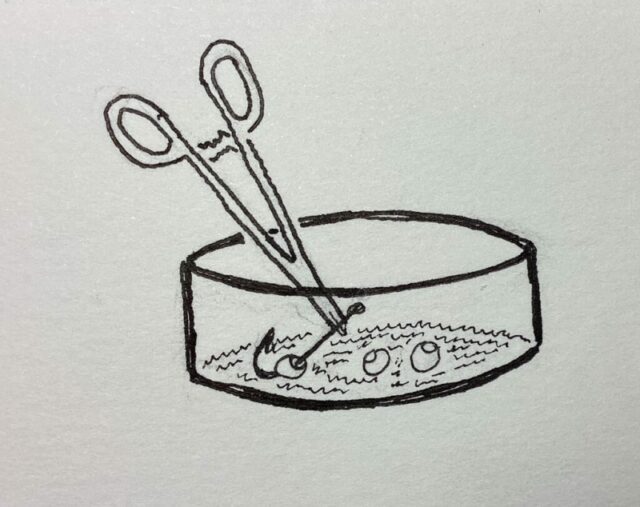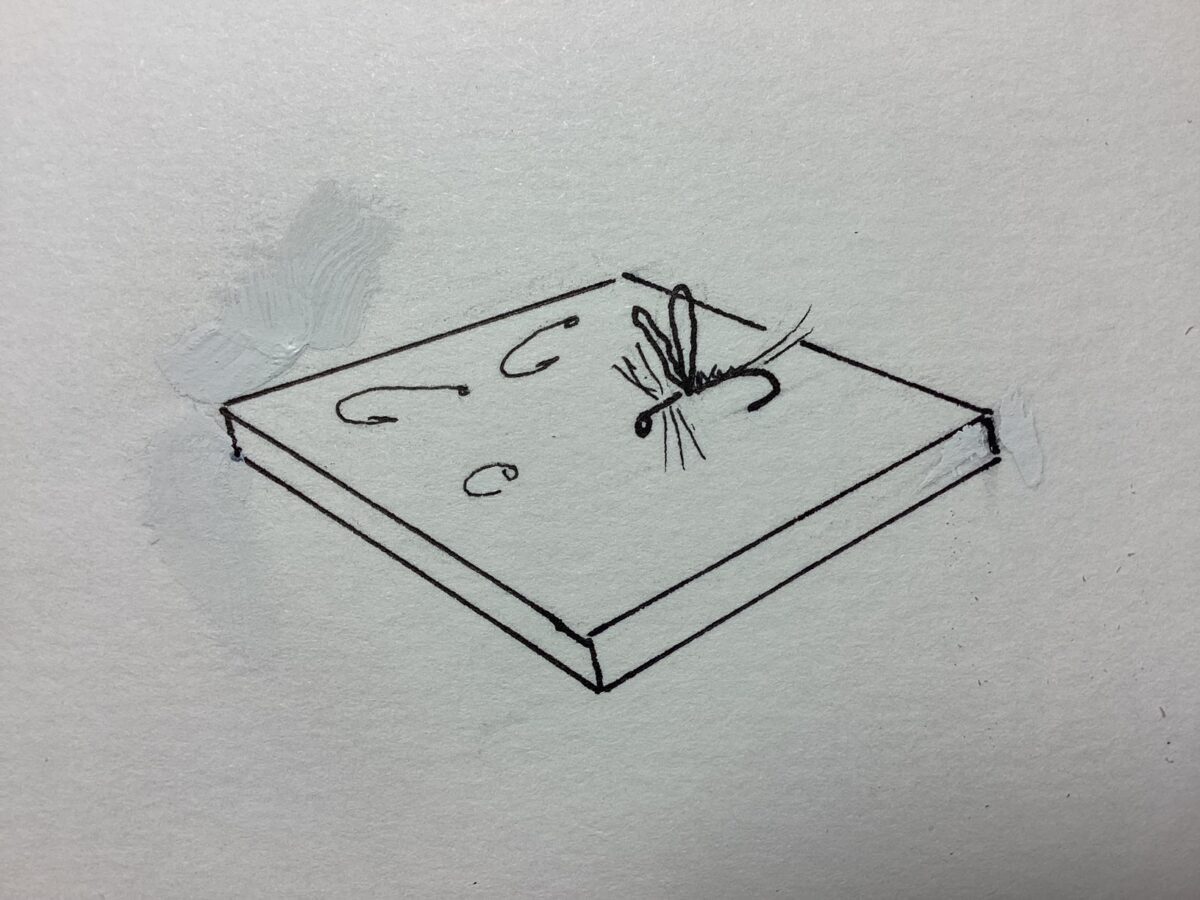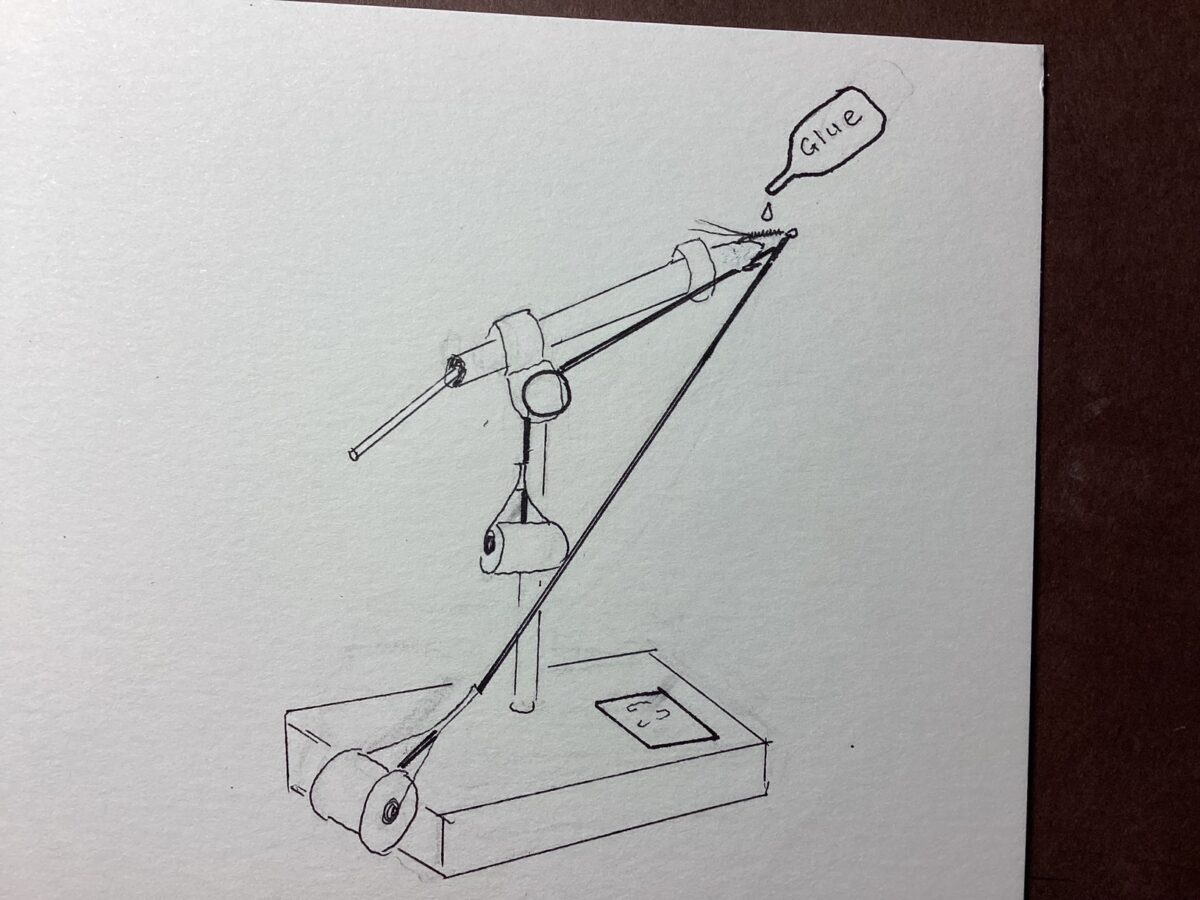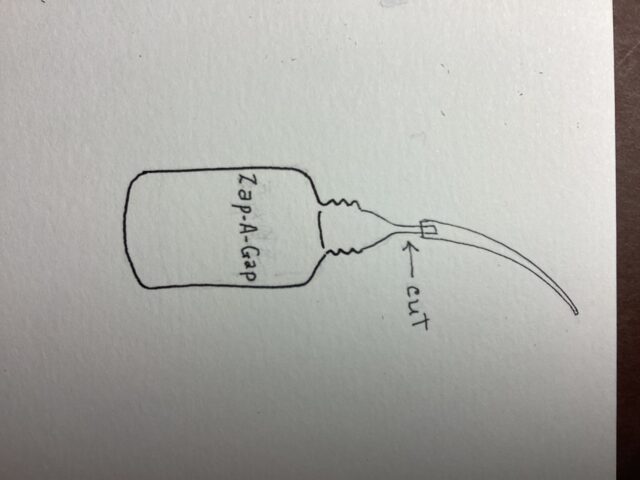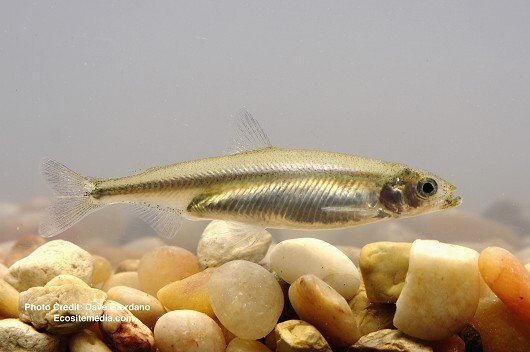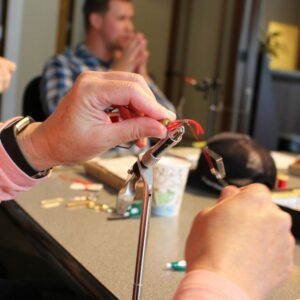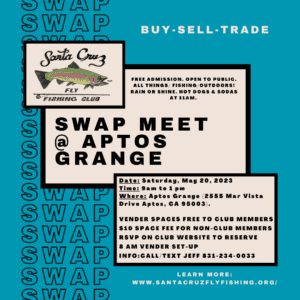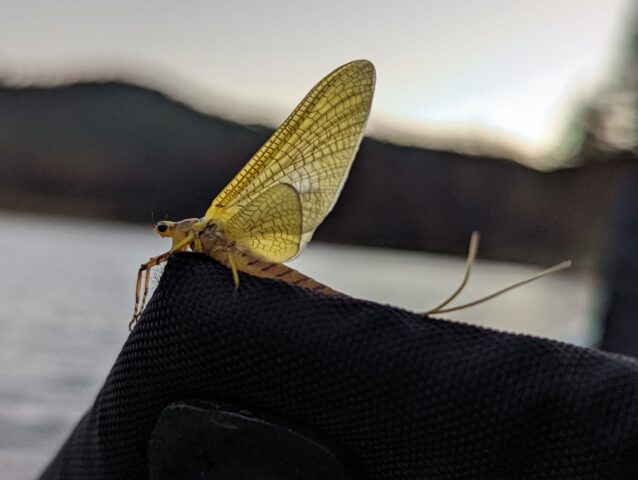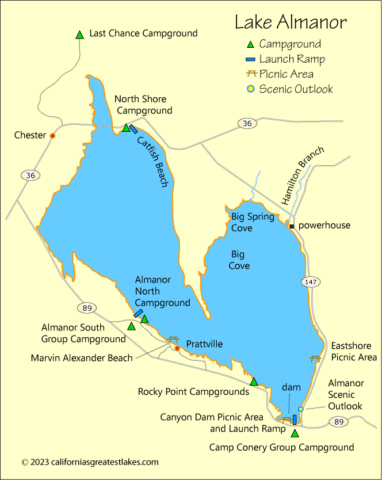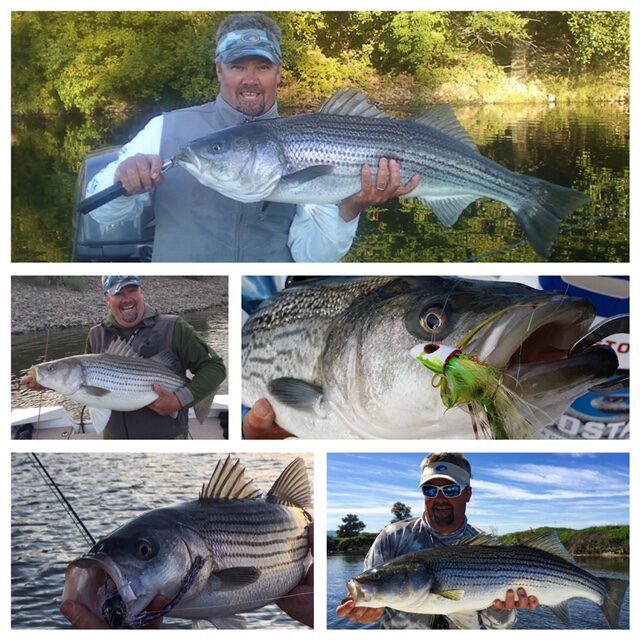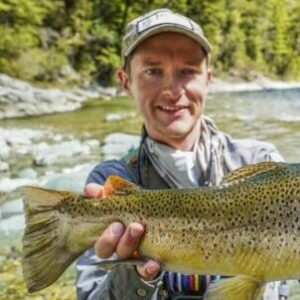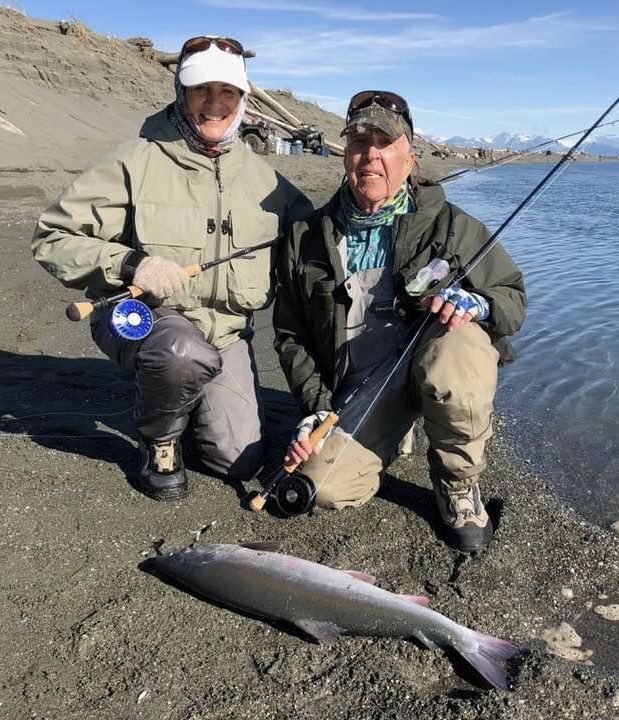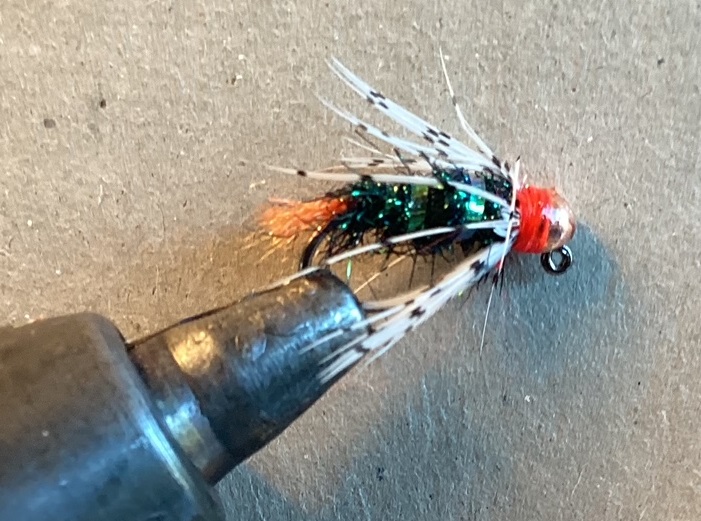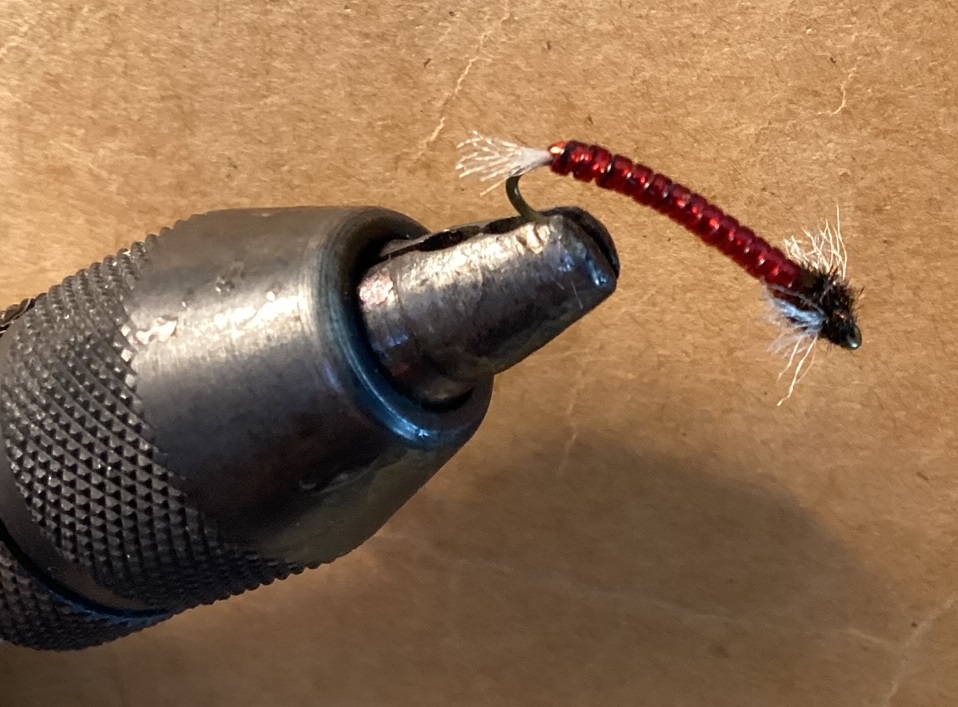Apr 12 : Kelly Lake – Watsonville (bass, crappie)
 Pajaro Valley Rod and Gun Club
Pajaro Valley Rod and Gun Club (Click for address and map)
Fishmaster:
Stand by as dates and details to be updated as the days get longer and warmer!
| Fishmaster: |
Scott Kitayama |
| Location: |
Kelly Lake in Watsonville (Private lake limited to 6 people) |
| Species: |
bass, crappie, bluegill |
| Duration: |
1 day |
| Registration and Cost: |
No Cost, but you must contact Scott as the number of people fishing is limited. Contact at scottkitayama@gmail.com.
Addtional Details & Confirmation of dates to be updated – Stay tuned |
| Meeting time and place: |
Scott will directly be in contact with those that are coming on the Fishout. |
| Equipment: |
Need to have float tube or kayak to fish the lake. PFD required and walkie talkie encouraged. |
|
6 wt with intermediate line for stripping leaches or bait patterns.
6 or 7 wt floating line for poppers or float-n-fly |
| Flies: |
Topwater: frog pattern, sliders, gurglers, poppers
Stripping: bunny leach, midnight cowboy, micro-clouser
Indicator: balanced leach, crappie jigs, hares ear (sz 10 and larger) |
| What To Expect: |
This is a private warm water lake in Watsonville. Surrounded by private residences and the Pajaro Rod & Gun Club. The club has gained access to the water thru the Rod and Gun Club. Bass and Crappie are the predominant species here. |
| Food: |
Bring lunch |
| Fishmaster Contact info: |
Scott Kitayama
650 279 5871
scottkitayama@gmail.com |

Apr 18 : Rooster Comb Ranch – UPDATED –
(Click for address and map)
Fishmaster:
23rd Annual Bass Fishout at Roostercomb Ranch
3/04/2025 – SOLD OUT
– If you are still interested, contact the Fish Master to be added to the wait list (contact information below)
This is our club’s 23rd annual bass Fishout to the Roostercomb Ranch since year 2000. This sprawling private ranch is located adjacent to Henry Coe State Park, off Hwy 152 entrance in Hollister near Casa de Fruta Restaurant. It’s a 22-mile off-road trek through the backcountry from the park entrance. This requires a 3-day weekend commitment. Accommodations are a 1928 ranch house and bunk house with options to tent camp or sleep in your vehicle. The ranch offers 9 bass ponds on its property plus 2 hike-ins on park property, float tube or shore fishing, hiking, birding, photography, and opportunities for riding your ATV on miles of ranch roads.
The terrain is rough, rocky and sometimes steep, therefore, all vehicles MUST be 4-WD with good clearance to drive in and around the ranch! If you do not have a 4-WD vehicle, arrangements can be made for you to carpool with someone who does.
Breakfasts and dinner meals/barbecues are organized by teams. Lunches, snacks and beverages are each individual’s responsibility.
IMPORTANT
Group is limited to 10 fishers (non-fishers welcome). Four (4) fishing spaces remain available! COST: $300/person (no charge for children 12 yrs and under). Please note that you are NOT on the list until I have your check YOUR CHECK SAVES YOUR SPOT!
Check payable to: Cecilia Stipes Mail: 328 Capelli Drive, Felton CA 95018
Fishmaster: Cecilia Stipes – flyfishgal3@aol.com – 831-566-7707
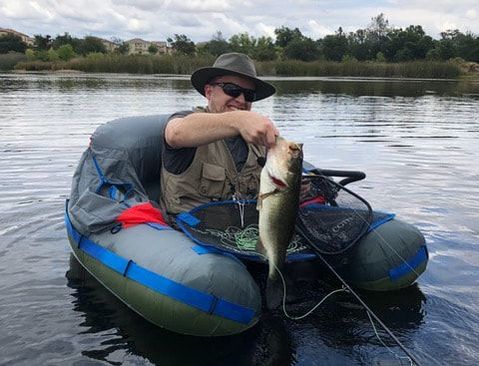
Apr 26 : Green River – Utah
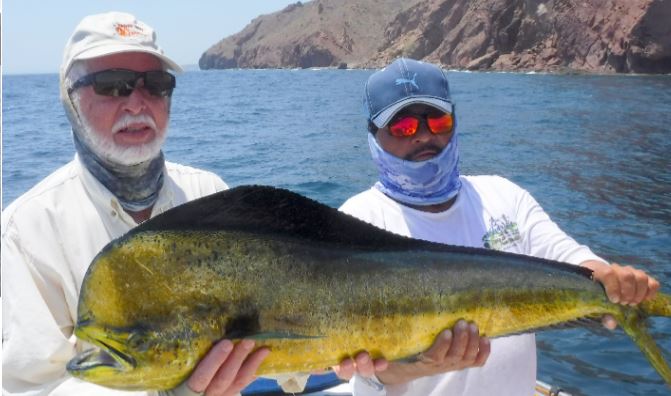
(Click for address and map)
Fishmaster:
Green River – Utah
Currently this trip is at maximum capacity.
For wait list options or updates, please contact the Fishmaster
Rick chace
rchace@got.net
General Information –
It is necessary for us to pay upfront to reserve the accommodations. The club’s standard approach to this is for each angler to pay his individual portion of the rental fee for sleeping accommodations.
Each angler will be responsible for the weekly rate of $300. This is a nonrefundable fee.
If an angler decides not to attend, they are responsible to sell their portion to another angler or forfeit their portion of the rental. I’m counting on everyone on the list to send their payment and secure their place on the trip. If not all 14 people commit by payment, there will be a increased adjustment in the weekly fee for each angler since the rental cost is based on the number of people.
Matt Twissleman will be handling the food end of our trip. We discussed briefly a scenario of having three of the seven nights dinner meals be cooked and served as a group meal , and the other 4 nights you’ll be responsible for your own meals. So one of us or several of us will stop in Salt Lake City and stock up on provisions for these meals along with lunch makings. Breakfast will be up to the individual, whether they want to cook it or eat out. We will provide bagels and cream cheese as part of the group food. Matt’s email is included in the email list above. Please if you have any dietary restrictions advise him of specialty item possibly needed for your meals. The fee for food will be a separate fee calculated after our arrival at the fish out. If you intend to cook your own food, you’re welcome to use the kitchen, but keep in mind there are no grocery stores within 50 miles. So remember to stock up before you leave civilization! There are three different restaurants in the area.
There are many guide services available for the Green River float, along with raft rental. Over the next few weeks, we will provide a list of potential recommendations so you might want to book your float trips? There is plenty of access along this river for wading a 7 mile trail system along the A section of the river.
Elaine Cook has offered to hold a fly tying class especially for the Green and will provide patterns that will accommodate that time of year. There is a great fly shop Trout Creek Flyer https://troutcreekflies.com/
We will start an ongoing thread of emails to this group. I will start to suggest that you think about if you’re going to fly or drive. If you fly, you fly into Salt Lake City and you can rent a car and split the cost with another member or 2.. The drive time from Salt Lake is about 4 1/2 hours. Drive time from Santa Cruz is probably 14 1/2 or 15 hours.
A BUCKT LIST Fly Fishing Trip | Green River-Part 1
https://www.youtube.com/watch?v=VEZ7X2eeph8
Fly Fishing for BIG BROWN Trout on a LEGENDARY Trout Stream | Green River-Part 2
https://www.youtube.com/watch?v=5gwUTUknv0Q



May 16 : Upper Sacramento River / McCloud Fishout – UPDATED –
Dunsmuir Park (Click for address and map)
Fishmaster:
Date and description subject to change due to seasonal runoff conditions Please Stay Tuned
Fishmaster:
Alex Ferber
831-419-0564
alex.ferber74@gmail.com
Alex’s guide site: https://sites.google.com/view/adventureflyfishingsantacruz
Location: Upper Sacramento River with Potential McCloud River Side Trip
Species: Trout
Date / Duration: Tentatively March 14th – 16th, 3 Days
(Please contact the Fishmaster for further details as the Fishout is dependent on flows/conditions)
Cost: No Cost
Equipment:
Typical Trout Set Up 9′, 4-6wt Rods w/ Floating Lines Ideal
Euro Nymphing, and Trout Spey conditions availableNymphs: Pheasant Tail, Hairs Ear, Prince Nymph, Wooly Buggers, Perdigon, Copper Johns, Zebra Midge, Micro May, Golden Stones
Drys: Caddis Patterns 12-16, Upright wing vs. Emerges, Missing Link, Stone Flys, Parachute Adams, Comparaduns (various sizes 16-12)
Misc.: Soft Hackles, Streamers, Leaches
What To Expect:
This Fishout’s final date is still TBD and subject to river flows as we get closer to spring.
The upper Sac. has excellent access via. Hwy 5 and by walking the railway tracks. Euro/High Stick/Indicator Nymphing is the go to. Come prepared with plenty of water to drink and expect to walk a fair amount. The river is made up of riffles, runs, pocket water, small holes, huge pools and undercuts.
Special Considerations:
In addition to this being a traditional Fishout, I propose that if there are any members of the club who are familiar with the Upper Sac. to volunteer as a mentor during the Fishout to those in the club with little to no experience. Groups of 2-3 novice anglers per mentor. This will help to add to the experience and allow others to get to know the river.
Food: DIY, with potential of potluck as details emerge
Camping:
Sims Flat – 26987 Sims Lookout Rd, Castella, CA 96017 https://www.fs.usda.gov/recarea/stnf/recreation/ohv/recarea/?recid=6577&actid=29
Castle Crags State Park – Located 6 miles south of Dunsmuir on I-5
Lodging:
Dunsmuir Lodge – 6604 Dunsmuir Ave, Dunsmuir, CA 96025 https://www.dunsmuirlodge.com
Cave Springs Resort – 4727 Dunsmuir Ave, Dunsmuir, CA 96025


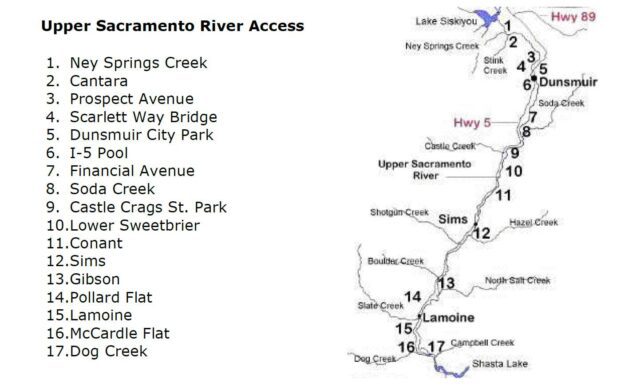
Jun 02 : Pyramid Lake Fishout
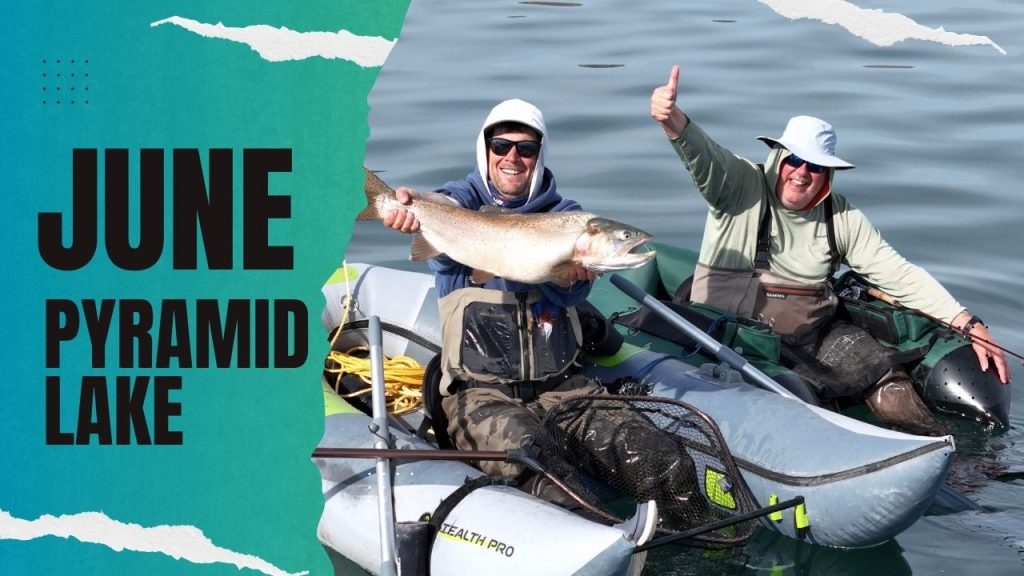 Pyramid Lake
Pyramid Lake (Click for address and map)
Fishmaster:
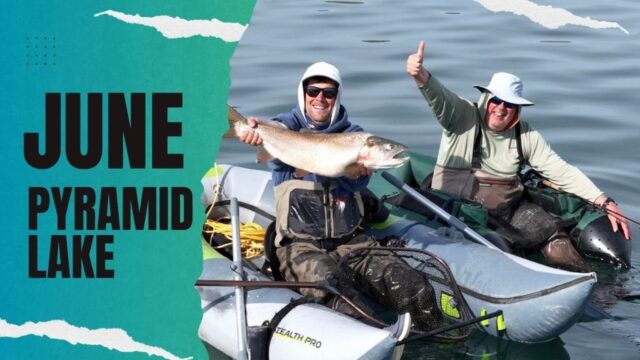
Fishmaster: Mike White
Greetings fellow Santa Cruz Fly Fishing Club Members
I have been leading the Pyramid Lake fishing trip for the past ten years. It has always been a remarkable fish out, and one of the best attended too. However the past three years have been very challenging and we have not caught very many fish and people have come away disappointed with the outcome.
That leads me to a new discovery about how to fish Pyramid Lake. Jeff Goyertte, a club member and our raffle coordinator took a trip to the lake and fished with Rob Anderson, a long time guide on Pyramid. He went on the trip in early to mid June of 2024. They fished from float tubes, and with fly gear that was not the typical set up that we are accustomed to using to catch these big trout . Well he did extremely well and when he told me about his experience, it peaked my curiosity.
Jeff was kind enough to put me in touch with Rob Anderson. I had a good conversation with him and I think it is worth exploring a fish out with Rob in June of 2025. He can take out a max of 12 people on float tubes. It is $350 for two and a half days ($175.00 Deposit). The first day people arrive at a beach along the lake where Rob sets up a camp. This first day is really a prep day where the guides provide training on how to fish from your float tube for these big trout. You would be responsible for your own lodging whether you camp on the beach or go back to a hotel or stay at Pyramid Lodge. Rob provides breakfast and lunch for your $350 fee. We are currently planning on June 2, 3 and 4th. Also, each club member would be responsible for making their own reservation by contacting Rob and paying a deposit to him directly.
Contact Rob Anderson at 775 7421754 to make reservation.
Note: this fishout requires float tubes/kick boats. NOT provided by Rob Anderson. They, along with fins, waders, and PFDs, are the responsibility of each individual participant.
We are currently looking to book Rob to do a virtual presentation at either our January or February monthly meeting.
So this is a whole new deal. The old fish out would be replaced by this one. And it would be a different experience.
If you have any interest please contact me Mike White at 831 706-5556 or email at lumberguy73@hotmail.com
Ps. Jeff Goyertte and a few other club members went on Rob Anderson’s float tube trip to Pyramid in early October. They did not have good success on that trip. The conditions were not ideal with water temperatures higher than usual. That probably contributed to the lack of catching fish that weekend.
General Lake / Shore Fishing Information:
Equipment: 6-9 weight rods with hi-speed, hi-D shooting heads or fast sink integrated lines to fish the bottom in 6 to 9 feet of water, and a floating line for indicator fishing. You should bring a stripping basket and a ladder that will accommodate it. A ladder helps to get you up out of the cold water and enables you to cast out to where the fish are. You can still catch fish without one but not with nearly as much consistency.
Flies: Woolly buggers in black, white, purple, olive, midge, caddis and mayfly nymphs to name a few. Flies may also available from club member Jim Hall who ties some very good flies specific to Pyramid cutthroat as well as other species at reason-able cost. His number is (831) 713-6835. There is a general store with provisions as well as tackle and an assortment of flies.
How to get there: Take US 80 to Reno-Sparks, take the Pyramid Blvd. off ramp and go north about 35 miles. Crosby Lodge is at Sutcliff, near the Ranger Station.If you have any questions about equipment or how to get there, check the “Gearing up” columns in the March 2007-2009 archives on our great club website, or call Mike White at (831) 706-5556.If you are considering going to Pyramid again this year with the club and you have not already done so, please contact the person who is booking the trailer you stayed in last year. Trailer-masters, if your trailer has gaps or cancellations, you can call Mike so he can pass the names of members who don’t have lodging to fill the empty spots.
Fishing, Camping, and New Ladder Regulation: Fishing and camping permits can be purchased online prior to the fish-out. We would highly recommend doing this. Go to www.plpt.nsn.us to obtain your licenses. There is also an RV Park available at (775) 476-1155.Pyramid Lake Fishout, March 15th-21st, 2020
As with any great fishery there are always a long list of rules and regulations. We would recommend you review them on the website above. Suffice to say those of us who have been go-ing to Pyramid Lake for many years are a good source of infor-mation as well. We will help inform and guide all newcomers.
15.6 USE OF LADDERS, ETC.Any ladders, milk crates, boxes or other objects used in the water as a fishing aid must be occupied or closely attended (i.e. remain in the area) by fishermen at all times. Any person who leaves such objects unoccupied in the water for more than one hour will be deemed guilty of littering. 15.6.1 Fishing aids described above must have a permanent tag affixed that has the name, address, and phone number of the owner of the fishing aid. If the permitted angler using the fishing aid is not the owner, the owner will be the responsible party for any infractions by the permitted angler.
Last year I observed people parked closer than 100 feet to the lake. I asked several of them about it, and the response was the Rangers weren’t enforcing it. This prompted me to contact the lead Ranger by phone. He said, “We are most definitely going to enforce the 100-foot ordinance!” So, when parking your vehicle, you must be a minimum of 100 feet from the lake’s water line. Also, you need a permanent tag affixed to your ladder with your name, address, and phone number on it. Most of us who use fiberglass ladders use a heavy black magic marker to write the necessary information directly on the ladder. There are also tags which can be purchased from local fly shops, for a fee.
Pyramid Lake Lodge at (775) 476-0400
NOTE: Due to insurance regulations, all attendees must be paid up members of Santa Cruz Fly fishermen, so get your member-ship paid up if you haven’t done so yet.

Jun 20 : Burney and Around – UPDATED –
(Click for address and map)
Fishmaster:
Date and description subject to change due to seasonal conditions Please Stay Tuned
| Fishmaster: |
Alex Ferber |
| Location: |
Lakes, rivers and streams of the Burney area |
| Species: |
Trout |
| Duration: |
3 Days |
| Cost: |
No Cost |
| Meet Up: |
Date of Fishout TBD and subject to change due seasonal conditions
Hat Creek Park off Hy 299 (See the map below). The park is approximately 10 minutes from the highway 299/80 junction. The park is on the left hand side going east on 299. If you google Hat Creek Park, it should show up.
This meet up will be a general discussion with your Fishmaster Alex Ferber. Here he will be discussing the local fishery, access points, general information and answering any questions you might have about making this a successful outing.
Meeting time to be updated as we get closer |
| Equipment: |
Typical Trout Set Up 9′, 4-6wt Rods w/ Floating Lines Ideal |
|
Euro Nymphing, and Trout Spey conditions available |
|
Nymphs: Pheasant Tail, Hairs Ear, Prince Nymph, Wooly Buggers, Perdigon, Copper Johns, Zebra Midge, Micro May, Golden Stones |
|
Drys: Caddis Patterns 12-16, Upright wing vs. Emerges, Missing Link, Stone Flys, Parachute Adams, Comparaduns (various sizes 16-12) |
|
Misc.: Soft Hackles, Streamers, Leaches |
| What To Expect: |
This Fishout is DIY Fishout with your Fishmaster acting as a resource person helping with any questions regarding where to fish, access, use of personal watercraft, fishery history, etc. Depending on interest there is potential of a pre Fishout presentation (TBD) and or tour of any one of the local areas with the most interest.
More information to be updated as interest develops. Please contact the Fishmaster if you are interested in attending. |
| Local Waters: |
Hat Creek: Spring creek with plenty of easy access, walk and wading. There are 3 distict sections from the Power House Riffle, to The Lower Freestone Section. There are an abundence of hatches year round and daily from mayflies, caddis, and stone flies with the potential of a trico or green drake hatch.
Burney Creek: Spring creek with access around the McArthur Burney Falls State Park. The waterfall is a must see. This is great water for a dry/dropper set up as well as traditional dry and nymph fishing. Above the falls the creek is stocked and below the fish are wild.
Pit River: Classic tailwater freestone fishery. This river is known for its hard fighting wild rainbows. There is great walk and wade access but the terrain is difficult with large snot covered bowling balls covering the river bed. Those with strong wading skills and a stout wading stick only need apply. The river is broken up by multiple power houses each with their own characters. Primary a nymphing river either by indicator or tight line. Rubber legs and dark lords and lots of weight (bring lots of both).
Baum Lake: Stocked and great for a small float tube or kayak. Excellent dry fly and streamer fishing.
Lake Britton: Primarily a motorized boat lake. Warm water fishery with small mouth bass, and potential for bull trout.
Ahjumawi / Big Lake Lava Springs State Park: Launch at “Rat Farm”
Fall River: Iconic spring creek with an abundance of large wild rainbows. No shore access. Non motorized boats can be launched at the Cal Trout public access or a kayak/motor boat at the “Rat Farm” (Big Lake/Ahjjumawi launch). Awesome dry fly, streamer and indicator fishing. |
| Lodging: |
Camping – Too many to list, this is an outdoors paridise with options from unimproved to glamping. Plenty of places for RV hookups and KOA camping |
|
Hotels & Motels: Various options available in the Burney area |
| Food: |
DIY, with potential of potluck as details emerge |
| Fishmaster Contact info: |
Alex Ferber |
|
831-419-0564 |
|
alex.ferber74@gmail.com |
|
https://sites.google.com/view/adventureflyfishingsantacruz/home |
| Links: |
https://www.theflyshop.com/streamreport.html |
|
https://www.shastaangler.com/ |
|
Burney Sporting Goods – 37427 CA-299, Burney, CA 96013 |
|
|
|
|
|
|
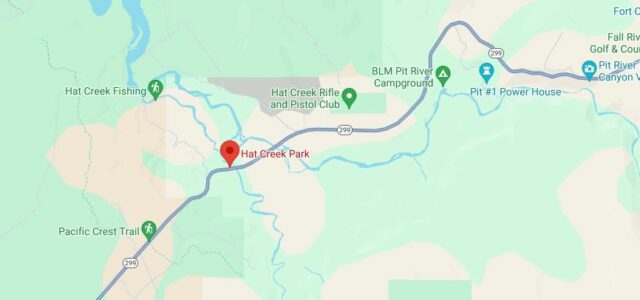
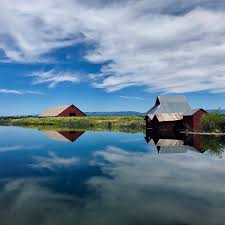
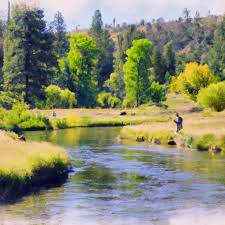

Jun 22 : Lake Almanor/Hex Hatch – Jun 22th – 28th 2025
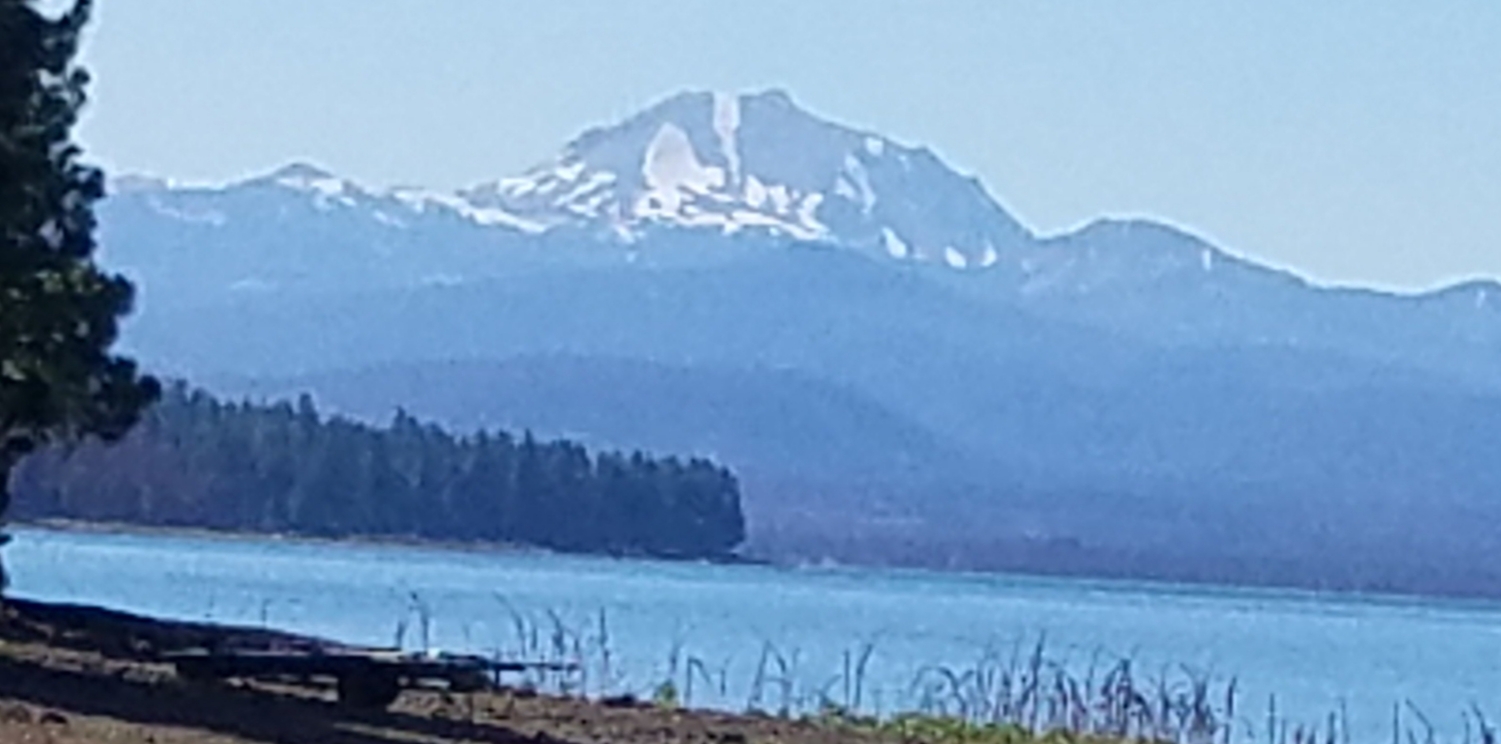
(Click for address and map)
Fishmaster: Jeff (Yog) Goyert - Fishmaster (831)234-0033
The Lake Almanor Fishout is scheduled for the last week of June, 6/22 thru 28th, 2025. This time period is, hopefully, the peak of the annual Hexagenia hatch that begins generally mid-June and runs through mid-July. The most productive fishing takes place early evenings on into past dark between Lake Almanor West to Canyon Dam on the Southwest side of the lake. Most of the fishing is done from float tubes as well as small boats or even from shore.
In addition to the evening “Hex” hatch, a multitude of opportunities exist for fishing throughout the day to include Little Crater Lake, Manzanita Lake, Baum Lake, Eagle Lake, Butt Valley Reservoir, Deer Creek, Clear Creek, Feather River, Yellow Creek, plus many more.
Lodging will be the responsibility of individual attendees. A popular campground operated by PG&E is the Rocky Point Campground, for reservation information call 916-386-5164. Many USFS campgrounds are in the area. Reservations are available through www.recreation.gov or by calling 877-444-6777. Make use of internet resources to acquire the actual campground names. There are also many resorts and rental cabins available in the area. A few examples are Wilson’s Camp/530-259-2267 and Plumas Pines Resort/530-259-4343. Other options are available via online research. Be advised that due to the popularity of fishing at this time of year reservations fill up early.
Sierra Fly and Tackle, stores in Chester and Hamilton Branch, is a great resource for current conditions and reports along with a large inventory flies and equipment. A must stop for all visiting fly fishers if only to get one of their cool tee-shirts. Both first time and veteran “Hex” Anglers could well benefit from the expertise provided by a knowledgeable and experienced guide. Lance Gray (530-517-2204) or Tim Loomis (831-345-8411) both offer instructional packages to help achieve success during the “Hex”.
Fish Master – Tim Loomis
Tim Loomis <bigsurstyles@att.net>
May 7th
Club monthly meeting will have Lance Gray providing a talk about fishing Lake Almanor in preparation for the June Fishout
Jul 07 : Loreto Fly Fishing Trip

(Click for address and map)
Fishmaster:
Loreto Mexico
Details to be finalized and date to be confirmed
The fishing day starts around 6:00 a.m. and we usually get back to the harbor between 1:30 and 2:00 p.m. Spend the rest of the afternoon fishing from the beach, having a cool drink in the pool, exploring Loreto, or just sitting around telling some tall fish stories. And, you will have many exciting moments on the Sea of Cortez to talk about.
The approximate cost for everything but meals and airfare is: *$995.00 per person, double occupancy; around $460.00 for a non-fishing guest. –
It does not include meals because there are some nice restaurants (A lot of fresh seafood!) in town or if you prefer, eat at the hotel, where they will also cook your catch to your preference. Interested?
Please contact Rich Hughett, 831-757-5709, for all the details. You will need to book airline flights* as soon as possible.
*No money will be collected in advance. Southwest Airlines and Alaska Airlines from San Jose to Los Angeles and Alaska Airlines to Loreto. Rich will help with your airline reservations.
Gear: The minimum size rod for Dorado is a 10 weight, with a corresponding size reel with plenty of backing. I suggest everyone take floating, intermediate and full sink lines, such as T-14. Most fish down there are not leader shy, so I use about a 5 foot leader with a 20 pound tippet. For Dorado, the main fly is a Sarmulmac. Clousers also work. In fact a variety of flies work for salt water fish, as long as they represent a smaller baitfish.
Notes: Further discussion of dates, gear and preparations to be had as interest develops
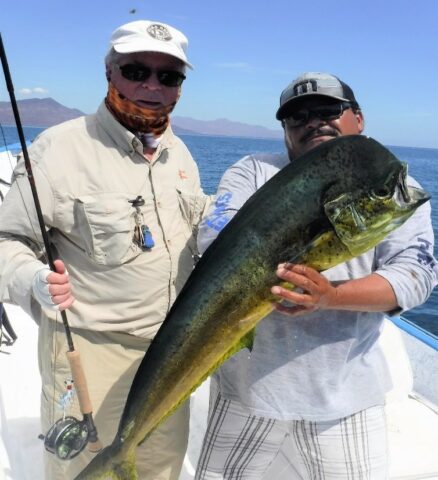
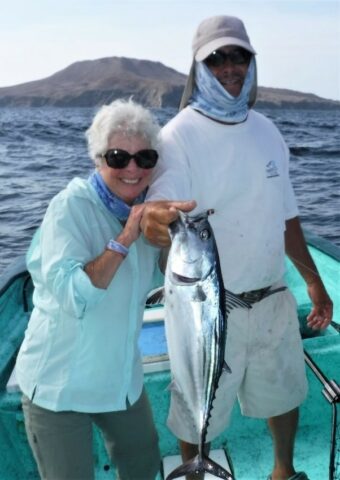
Sep 20 : Mammoth Fishout -Sept. 20-Oct. 4th
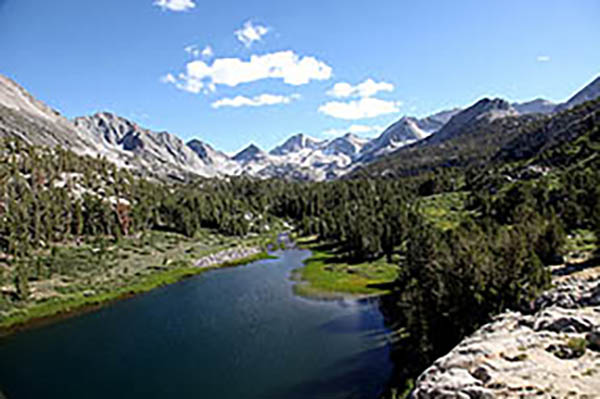 Mammoth Lakes
Mammoth Lakes (Click for address and map)
Fishmaster: John Cook fishmaster-- (831)688-1561 or (831)234-6515
Sign Ups: As a reminder, it is important to sign up early as sign ups have started and spaces are filling up fast for this Fishout.
Call John Cook letting him know which week, both or private room. Payment is required to secure our spot we need people to sign up as soon as possible. Should you need to cancel, you can find someone to take your place and get your money back.
Contact Ph # (831) 234-6515
Fishmasters: John & Elaine Cook
Dates: This Fishout will take place over two consecutive one-week periods. You may sign up for one or both weeks. Week 1: Sept 20 – Sept 27 . Week 2: Sept 27 – Oct 4.
Location: The town of Mammoth Lakes is located on the eastern side of the Sierra, 6 or 7 hours drive from Santa Cruz. There are many lakes and streams in the area to fish.
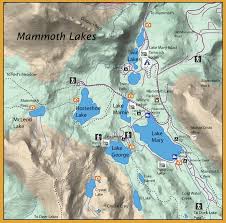
General: We will be staying in condominiums in the town of Mammoth Lakes. Condo has a lovely hot tub, so bring your suit. Two people per bedroom. Most people bring a sleeping bag to share queen size bed or a pad and sleeping bag to sleep on floor. A private room option is possible at an increased fee.
Cost: Shared single: $500/wk, $1000/2 wks. (Pricing Subject To Change)
Food Preparation: Breakfast and lunch items will be purchased by the Fishmaster ahead of time. Each person will be assigned a Kitchen Day. On that day, tasks will include setting out breakfast and lunch items, store unused food, and preparing the evening meal and clean up afterwards. Each person will be assigned a dinner that you will need to purchase and prepare. You will then be reimbursed for the cost for the dinner.
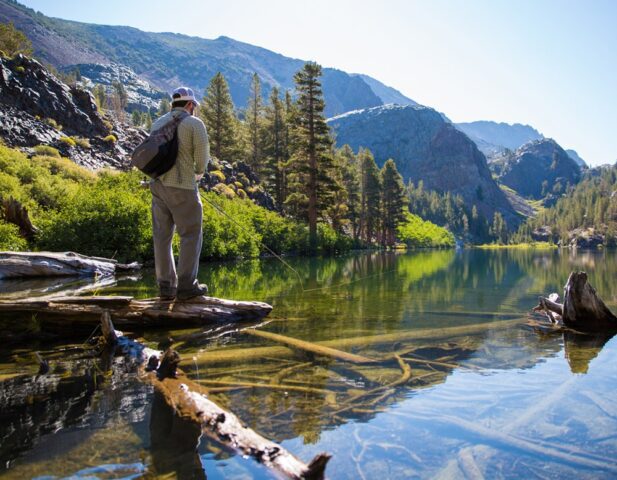
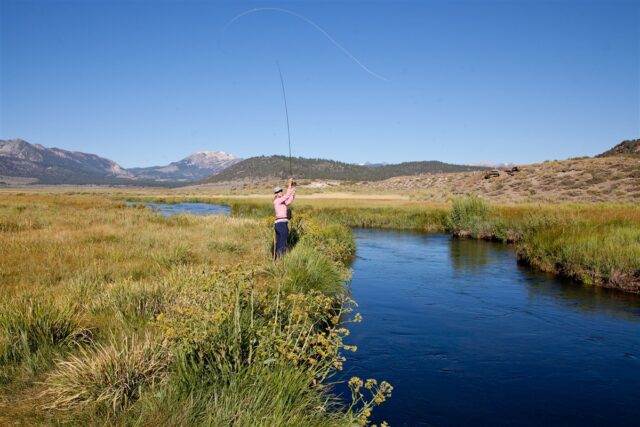
Oct 16 : O’Neill Forebay ‘Stosh’ Memorial Fishout October 17-20th
Medeiros Primitive Campground - Oneill Forebay (Click for address and map)
Fishmaster:
Event: O’Neill Forebay ‘Stosh’ Memorial Fishout
Date: October 17th – 20th (Subject To Change)
(I will be looking for a weekend with a ‘skinny’ moon, less night feeding for the fish)
Target Gamefish: Striped Bass
Location: Medeiros Campground located on the Southern Shoreline of the O’Neill Forebay, access off of Santa Nella Blvd. (Highway 33)
Hosts: Kevin Murdock troutdock89@gmail.com
These are primitive campsites so bring your own water. There are tables, sun pavilions, and chemical toilets, or outhouses and fire rings. No open fires are allowed outside of the rings.
Typically we will be camping as close to site 29 as we can get. This is a first come, first serve campground, so no reservations are accepted. Float tubes can be launched near the campsites, but boats must be first inspected, then launched from the
San Luis Creek Boat launch. Boats may not be left on the lake overnight. Boaters would be wise to exit prior to the closing of the entry kiosk. The ranger can place a seal on your trailer, allowing you to bypass the inspection process the next morning.
The rangers at the kiosk by the Medeiros entrance may insist that your float tubes need inspection. make sure they’re clean & dry.
Equipment: 8wt rods with fast sinking lines. Some anglers will occasionally use a floating line with a ‘gurgler’ type fly
Flies: Lee Haskins San Luis smelt, ‘Deceiver’ type patterns in red, white, chartreuse, the aforementioned gurglers and poppers.
Float tubes (may require inspection for quagga mussels)
Fins, sunscreen, polarized glasses, life vest
Links:
https://mengsyn.com/ A fly-fishing addict who fishes San Luis Reservoir and the Forebay.
http://www.danblanton.com/ Long time local fishing guide.
Forebay Water level:
https://cdec.water.ca.gov/dynamicapp/QueryDaily?s=Onf
There will be a signup sheet at our September meeting. We’ll also create a list for those hoping to participate in a pot luck in honor of Steve ‘Stosh’ Rudzinski.
Weather conditions can vary dramatically, so it would behoove members to check prior to departure. You could email me or just get conditions on-line. High winds can cause the lake to be closed to all vessels.
This is one of our nearest Fishouts, with the possible payoff of a double digit fish! Don’t miss out!
